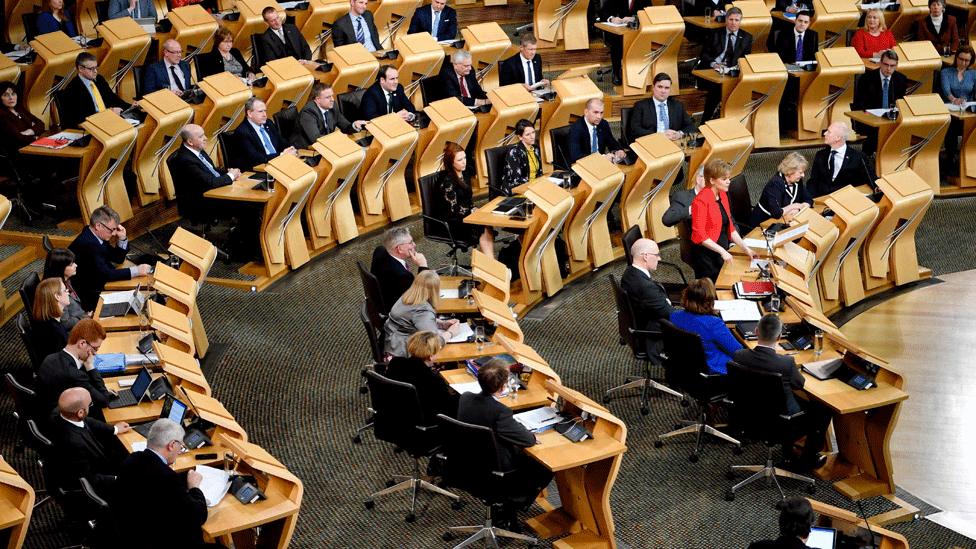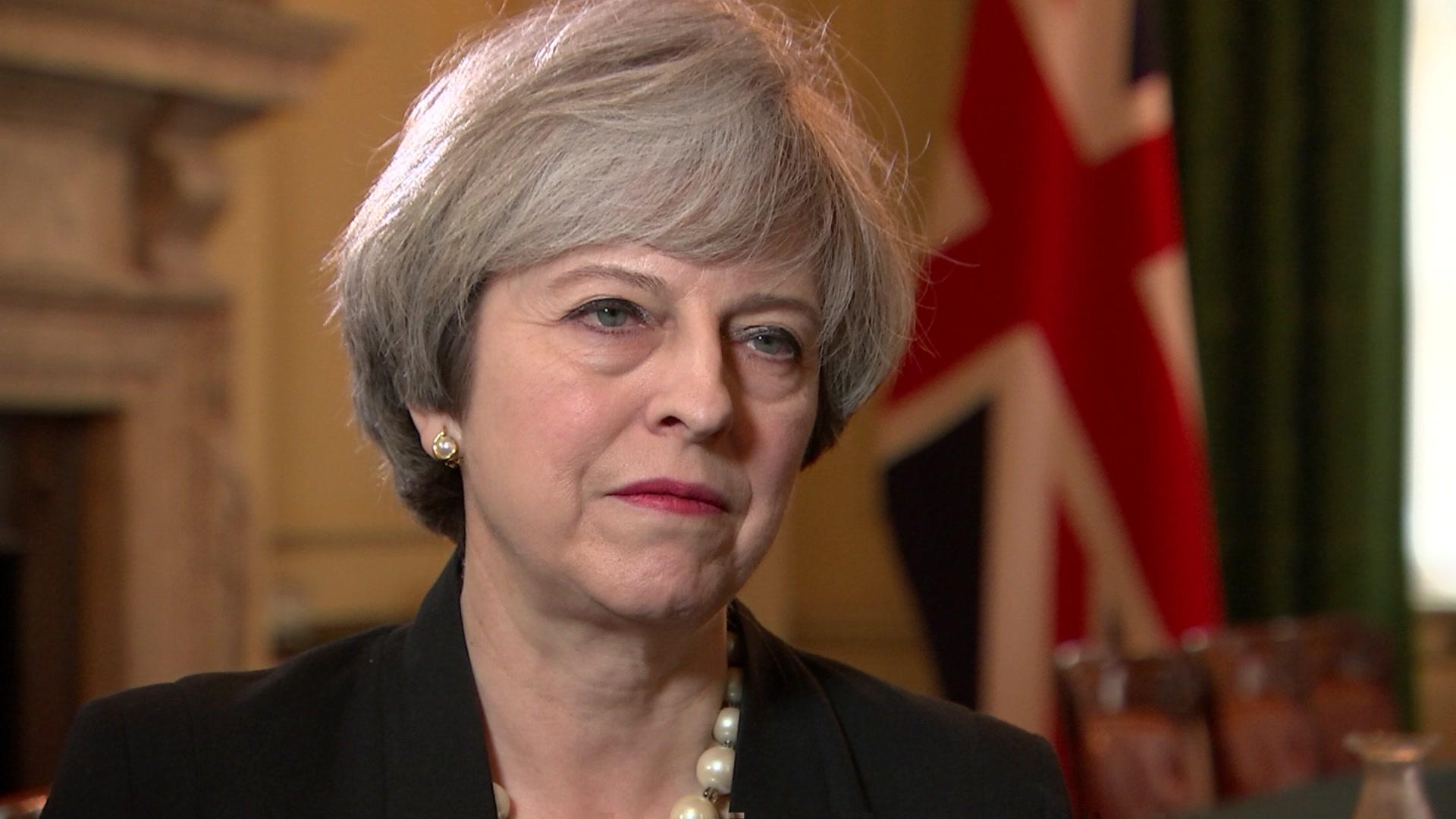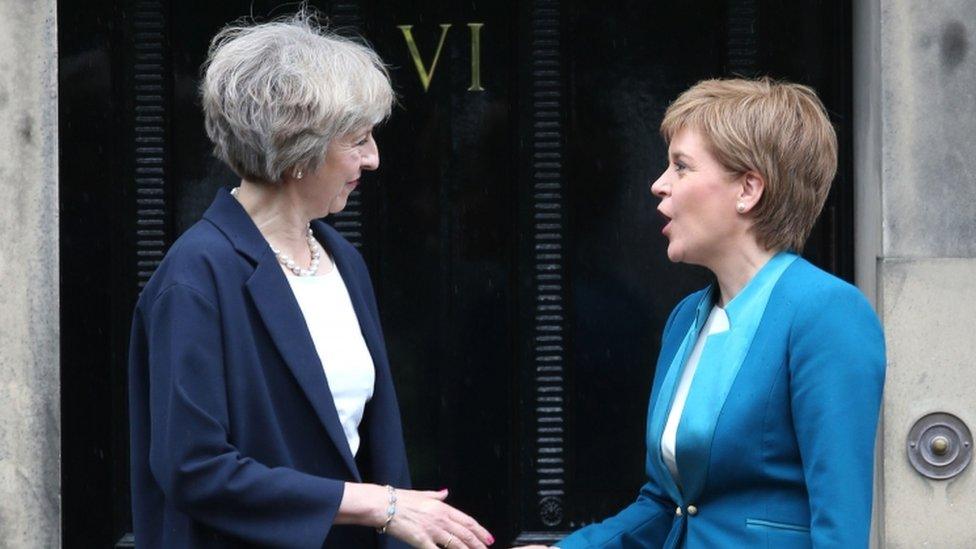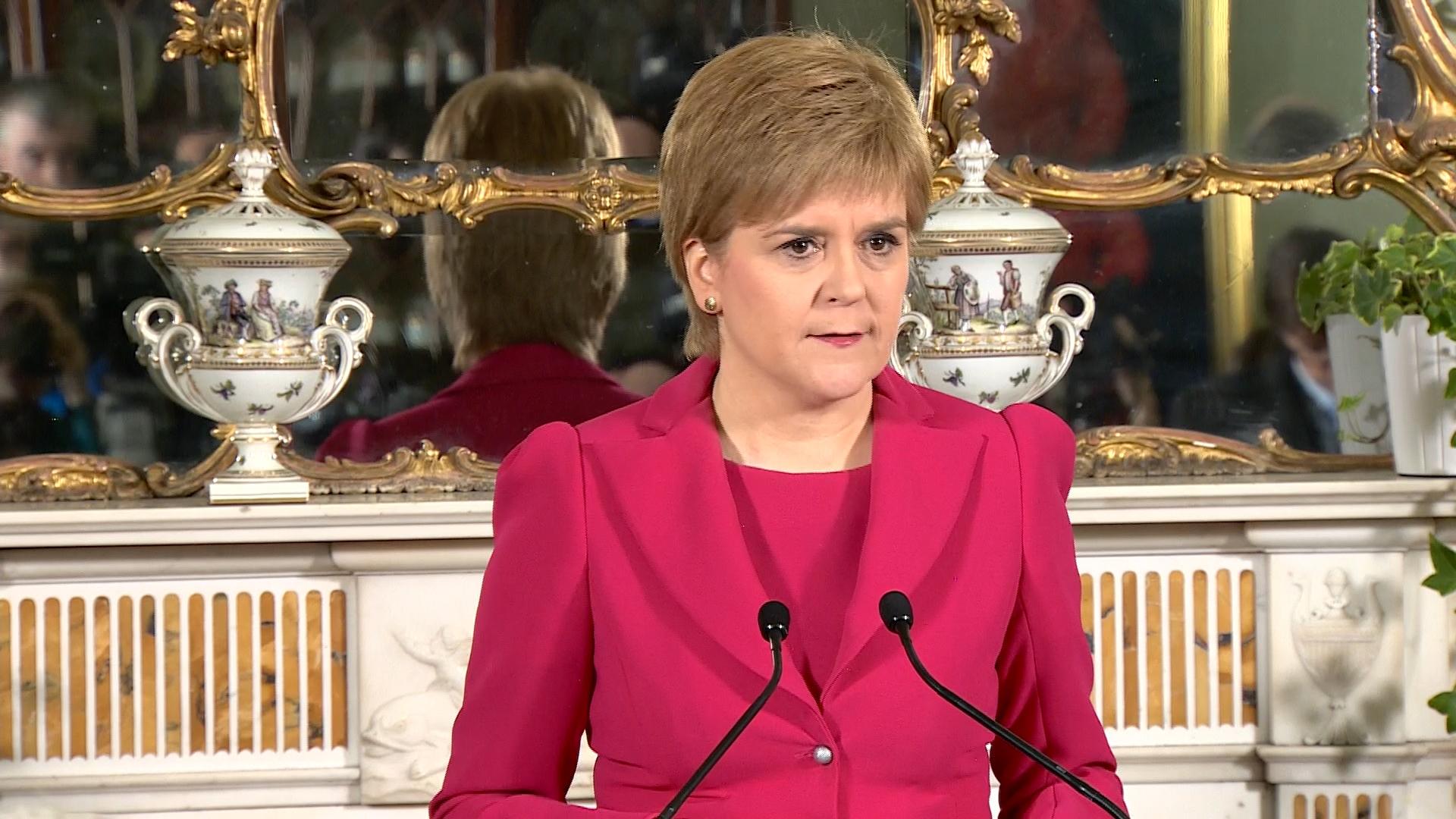What happens now MSPs have backed calls for a second referendum?
- Published

MSPs voted for the motion after a lengthy debate at Holyrood
First Minister Nicola Sturgeon announced plans to seek a second Scottish independence referendum in 2018 or 2019, and those plans have now been backed by Holyrood - but Theresa May insisted "now is not the time". So what happens next?

What has happened so far?
On Monday, 13 March, Nicola Sturgeon announced her intention to hold a second Scottish independence referendum.
The first minister said it was needed to protect Scottish interests in light of Brexit - she said Scottish voters must be offered an "informed choice" between the path the UK government was taking, and independence.
But by Thursday, 16 March, Prime Minister Theresa May said "now is not the time" for a referendum, saying all attention should be on the Brexit negotiations in the coming years.
The two have since met for talks in Glasgow, without any significant progress being made.
MSPs have now passed a motion calling for Westminster to grant a "Section 30 order" giving permission for a new vote.

What is a Section 30 order?
The power to call a referendum is reserved to Westminster. Section 30 of the 1998 Scotland Act, external is the mechanism by which Holyrood can legislate on reserved areas.
For the 2014 vote, David Cameron and Alex Salmond, the then-leaders of the UK and Scottish governments, signed the Edinburgh Agreement to give Holyrood the power to call the referendum.
Nicola Sturgeon - also a signatory of the Edinburgh Agreement, as deputy first minister - wants to get a similar deal from the current PM, Mrs May.
After a debate delayed by the terror attack at Westminster, she has got backing for this from MSPs - although they were split along party lines in the final vote, unlike the unanimous backing for the Edinburgh Agreement.

What happens next?
Ms Sturgeon has sent a letter to Theresa May underlining "the will of parliament" and asking for permission to hold a referendum. She says there's "no rational reason" for Mrs May to "stand in the way".
However, Theresa May's position remains that "now is not the time", a phrase fast becoming a mantra. Following the letter, a UK government spokesman said "we will not be entering into negotiations on the Scottish Government's proposal".
Scottish Secretary David Mundell has put it in even clearer terms; he says there will not be any talks "at all" over indyref2 "until the Brexit process is complete".
So again, it is not a case of "never" - but rather "not now".
Ms Sturgeon plans to come back to Holyrood after the Easter recess to set out how she will "move forward" towards a referendum.

So when might a referendum be held?
Ms Sturgeon outlined a window towards the end of the Brexit process in which she wants the vote to take place, between Autumn 2018 and Spring 2019 - a window now endorsed by Holyrood.
The first minister wants the picture of the final Brexit deal to become clear, so that she can offer Scottish voters an "informed choice" before the UK leaves the EU.
But her timetable has been rejected by the UK government, which doesn't believe the picture of Brexit will be clear until well after the UK is out of the EU - effectively, they say Brexit needs time to "bed in.
Does this mean there could be a referendum later, in 2019 or 2020?
Mr Mundell has refused to speculate about possible dates - he says he doesn't have a "crystal ball" - but he doesn't want there to be any talks during the Brexit process. Ms Sturgeon meanwhile said her talks with Mrs May "underlined" her belief in her stated timetable.
The two governments are at something of an impasse over this - but Ms Sturgeon argues the Scottish Parliament should have the final say.

How could the impasse be broken?
At this point, it is not particularly obvious.
Ms Sturgeon says she has a "clear idea" of what steps she will take next, but will not be drawn on what they are.
The Scottish government believe Mrs May's position is untenable, especially in the face of the Holyrood vote, and reckon she will have to back down sooner or later.
How could they force her hand? Options suggested and broadly discarded by the government include holding a new election on a specific platform of holding a referendum soon afterward, or holding an unauthorised "wildcat" vote. Neither appears likely.
Nor is Ms Sturgeon planning to go to court.
The Brexit process throws up various points at which Holyrood's consent will be needed for legislation, which could provide bargaining chips for the Scottish government - not least the Great Repeal Bill.
Mr Mundell has said there would be "significant implications" were Holyrood to refuse permission for such legislation.
The Supreme Court has rejected the idea that Holyrood could halt the Brexit process outright, but it could give Mrs May a significant headache. Ms Sturgeon could offer to let the Brexit legislation pass relatively unimpeded - in exchange for a referendum sometime in 2019.
That is one potential bargaining position. But as things stand, there is no clear route out of the current standoff.
- Published16 March 2017

- Published14 March 2017

- Published13 March 2017
